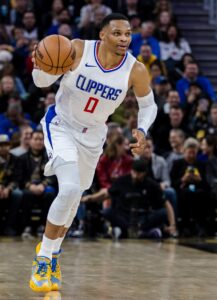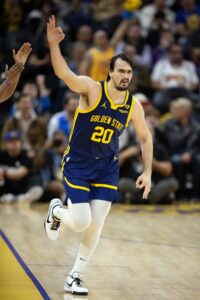This is a sponsored post from BetterHelp. As a BetterHelp affiliate, MLB Trade Rumors receives compensation from BetterHelp if you purchase products or services through the links provided.
As society’s knowledge of mental health grows, more treatment opportunities are available to a more significant number of people living with mental health challenges. One such option is online therapy, which allows individuals to receive mental health support from a device with an internet connection from any location.
What Is BetterHelp?
BetterHelp is an online therapy platform that works with a database of over 30,000 counselors, therapists, social workers, and psychologists from all 50 US states and some countries worldwide. This platform aims to break down barriers that often keep people from seeking help, such as financial burdens, a rural location with limited options for therapy, or a lack of accessibility in one’s area.
Understanding BetterHelp
BetterHelp may work differently than meeting with a traditional therapist. Below are some ways individuals can use online therapy via this service.
Signing Up
Signing up for BetterHelp often takes a few minutes. The initial sign-up process is a questionnaire which asks prospective clients about the following:
- Reasons for seeking therapy and goals
- The individual’s diagnosis or mental health challenge
- Therapist gender preferences
- Whether they’d like to meet with an LGBTQ+, Black, or Asian therapist
- Preferences for individual, couples, or teen therapy
- Gender, age, sexuality (optional), pronouns, and relationship status
- Spiritual identity
- Past experience in therapy
- Intimacy challenges
- Substance use habits
After filling out the questionnaire, which may take around five to ten minutes, prospective clients will be directed to fill out their name, email, and password. Then, they will be sent to the payment page, where they can choose a plan. After the payment has been processed, it often takes around 48 hours for a therapist to be matched with them.

Payment
BetterHelp plans are charged monthly for four weeks of therapy. The overall monthly cost covers four sessions with the therapist (one per week) and access to all of BetterHelp’s other resources, such as support groups and classes. Cost ranges from $65 to $100 per week, which can be more affordable than traditional therapy.
The match process
Therapists are matched with clients based on the client’s responses to the questionnaire upon signing up. The only limitation is that a therapist must be licensed to practice in the state the client lives in to be able to work with them. Clients can change providers at any time for any reason.
Using the platform
Individuals can log in through the app or website to use the BetterHelp platform. There, they can find their messages with their therapist, a journaling feature, options to schedule appointments, and extra resources. Through the settings section, clients can check their billing information, change their therapist, and edit their profile. Weekly sessions with a therapist can be held via phone, video, or live chat, all through the app or website.
Extra resources
BetterHelp offers resources that might not be offered by in-person providers, such as the following:
- Weekly support groups
- Online classes by mental health experts
- Goal tracking options
- Journaling and journal prompts
- Worksheets
All features are included in the platform’s weekly price, so clients can access them without paying extra.
BetterHelp’s outreach
BetterHelp works with the broader community to offer support to non-profit organizations and individuals in need. They have given over 65 million dollars in discounts and financial aid to cover therapy for low-income individuals and donated over 95,000 months of free therapy to communities in need. BetterHelp partners with over 100 non-profit organizations.
Who might benefit from an online therapy platform?
Online therapy is often more flexible and convenient than in-person options. This option might benefit people with a busy schedule, such as parents, full-time workers, and athletes, who may not have the time to commute to an extra appointment. Many of the most evidence-based modalities, such as cognitive-behavioral therapy (CBT) and dialectical behavior therapy (DBT), are available online.
Is online therapy effective?
Since 2021, four out of ten US adults have used this option. One study reported that over 71% of participants believed it was more effective than face-to-face therapy. Another study found that online therapy often led to increased quality of life for clients with anxiety and depression and was more affordable.
Takeaway
By seeking support online, financial, locational, and accessibility barriers can be removed, allowing more people to receive the support they seek. To get started, consider working with a platform like BetterHelp.



 Losing Caldwell-Pope allowed the Nuggets to free up their taxpayer mid-level exception, which they used to sign stretch forward/center
Losing Caldwell-Pope allowed the Nuggets to free up their taxpayer mid-level exception, which they used to sign stretch forward/center